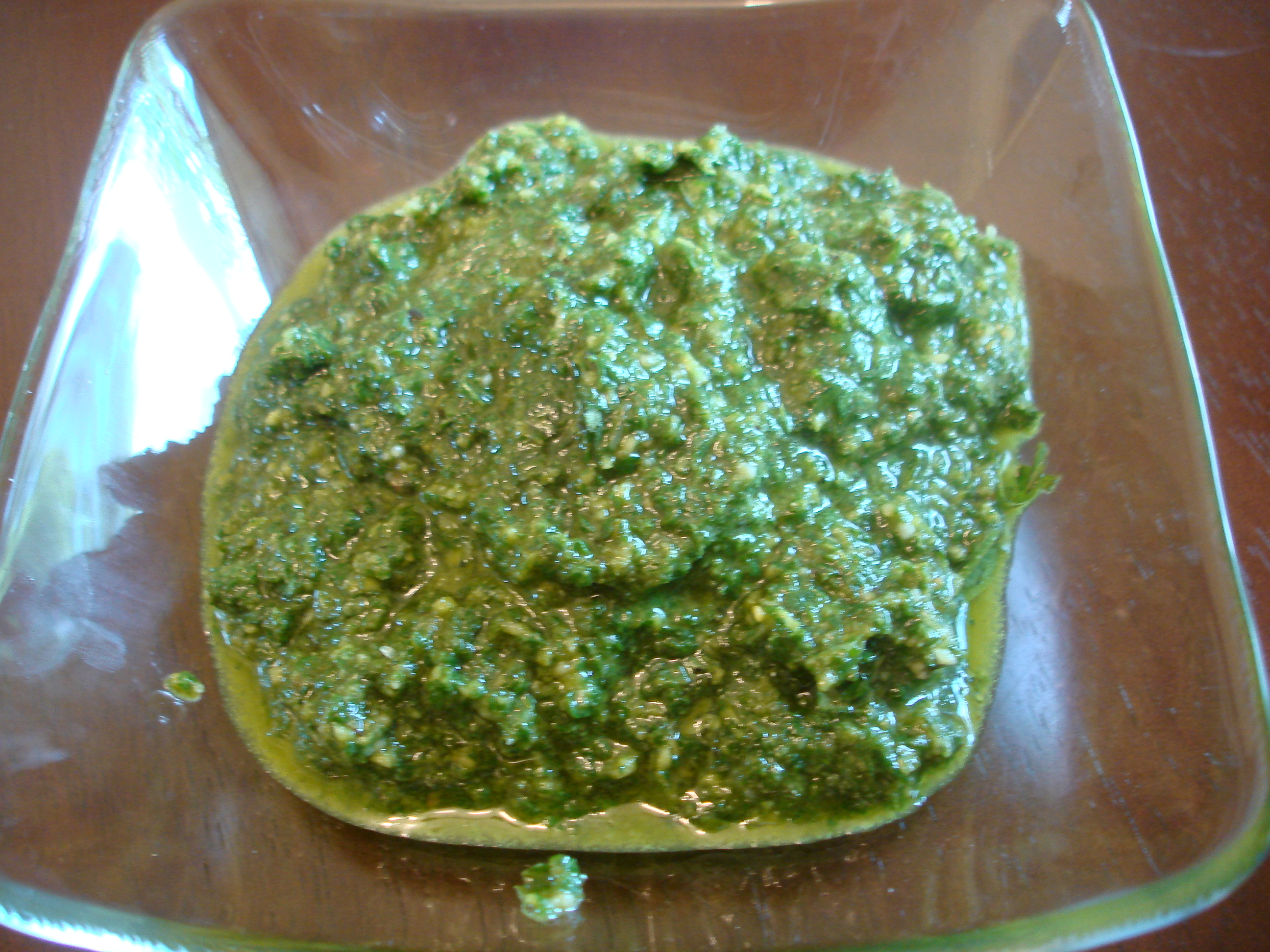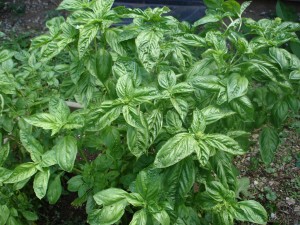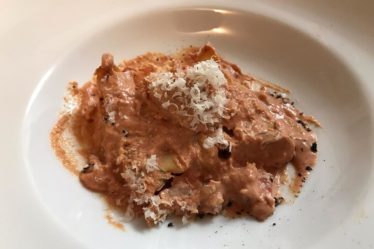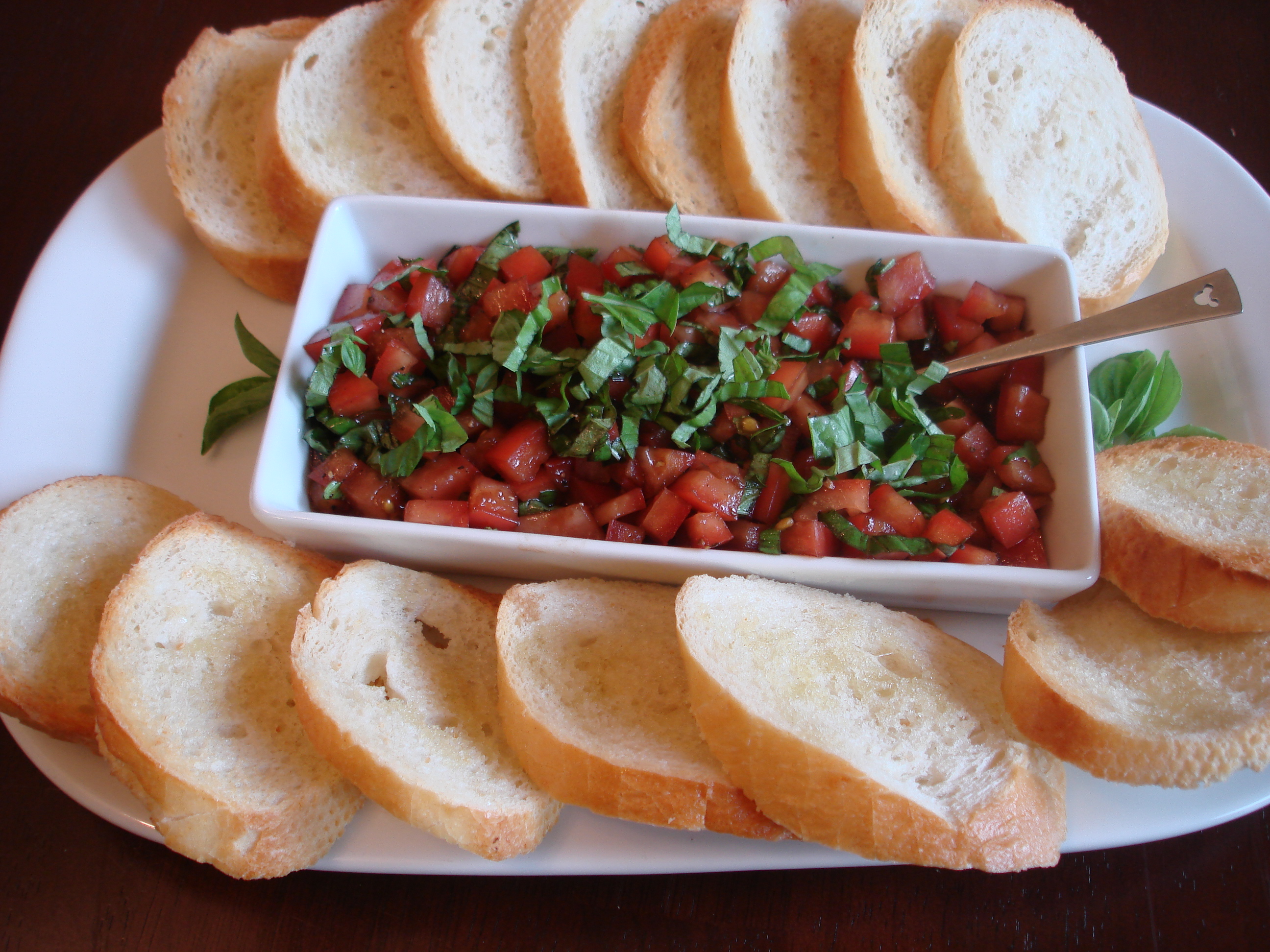
The end of summer means different things to people. For some, it is a time to close up the pool and put the boat in storage. (I fit in neither of those categories.) For others, it is a time for one last vacation at their summer home on the beach. (Not me…but if you have any of this cool stuff I’d love to be your friend.)
For me, the end of summer is also a solemn time. It means soon I won’t have fresh herbs growing in my backyard at my beck and call. It also means that I had better harvest what I have pretty darn quickly!
Apparently when I planted my herbs this season I thought there was going to be a national basil shortage and I planted 12 plants. For those of you who don’t plant fresh herbs that is a crazy amount of basil. 
The only thing for me to do at this point is make pesto or should I say pesto Genovese? Until today, I honestly didn’t know the difference.
The word pesto comes from a rough interpretation of the Italian word for pound or crush. This part of the definition completely made sense to me because my sisters used to call me a pest and pound on me until I went “Oh.” Actually I used to scream “MOM” but Pestmom just doesn’t sound appetizing does it?
The pounding preparation comes from mashing the basil, garlic and pine nuts with a mortar and pestle. It is ground up pretty well before the olive oil is introduced. Now a days, most people use modern electronics like food processors to make this sauce. I’ve only had the old fashioned version once and must admit it was quite flavorful. (Of course, the scientist in me says there is a flaw in my data because I would have needed to have a side-by-side taste test to really make a valid conclusion but luckily my nerd personality doesn’t write on this blog very often.)
Anyhow, the pesto most of us think of when we hear the word is Pesto Genovese. Pesto Genovese is the “classic” pesto made with basil, garlic, olive oil, pine nuts and Parmigianino reggiano. If you omit the nuts (and in most cases the cheese) you are making a French version called a pistou. (This may be one of the rare cases I disagree with the French preparation. What do they have against nuts?)
| Pesto Genovese |
- 2 cups Basil leaves (Pack the cups really well)
- 2-4 Garlic Cloves ( I REALLY like garlic so use your discretion)
- 2 Tbsp Pine Nuts
- 3/4 cup Parmigianino reggiano (parmesan or Romano)
- 1/2 cup Olive Oil (This is where you pull out the good stuff), plus some extra
- Salt and Pepper (I usually use a little less than a 1/2 teaspoon each)
- While your food processor is running, drop in the garlic and process until minced. (Most food processors have a little opening on top for you to drop ingredients in while the processor is running. I am not responsible if you lop off a digit!)
- At one time, add nuts and cheese and mince again.
- Add basil and let the processor chop it just for a couple spins. It won’t take much and you don’t want to “over process” your basil.
- While processor is running, slowly add your oil.
- Taste for seasoning.
- Remove and add to a bowl leveling the top. Drizzle a little oil on top. (This will help it stay super green.) Place plastic wrap on top so it is touching the oil and there are no air pockets.
- Refrigerate for up to 3 days. (You can freeze it also).
There are more modern pestos out there that are made from arugula, mint, oregano or cilantro. In addition, the pine nuts can be exchanged for your favorite nuts like walnuts or almonds. I’ve even had pesto with sun-dried tomatoes as the base. This is one of those foods where you can get away with anything as long as you “pound” your ingredients.
I love pesto on gnocchi, fusilli, and roasted veggies. It also is a wonderful alternative for your pizza sauce. I could go on and on with suggestions but I don’t want to be a pest-o. (You knew that was coming!)



Toss some pesto on cheese ravioli for me. Yummmmmm!
Anytime!